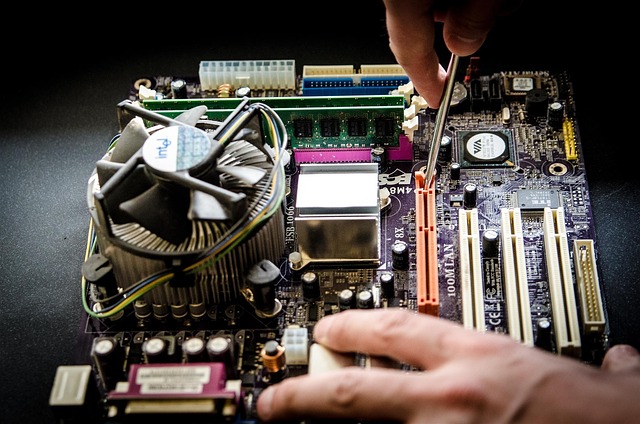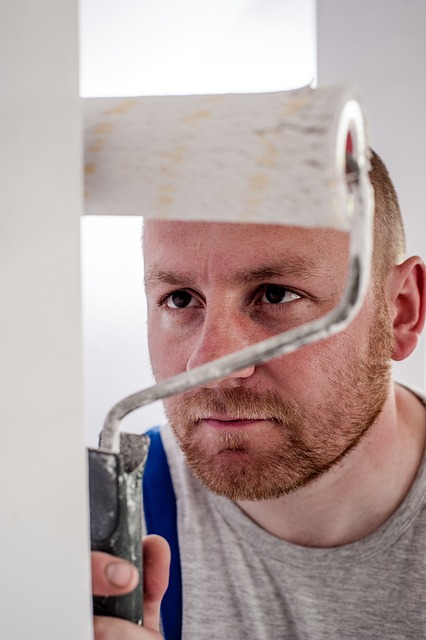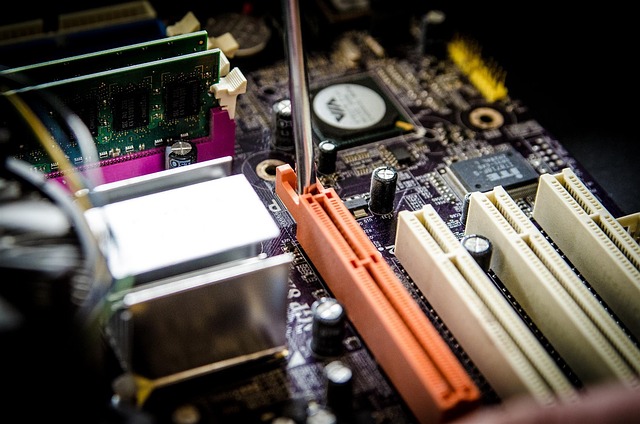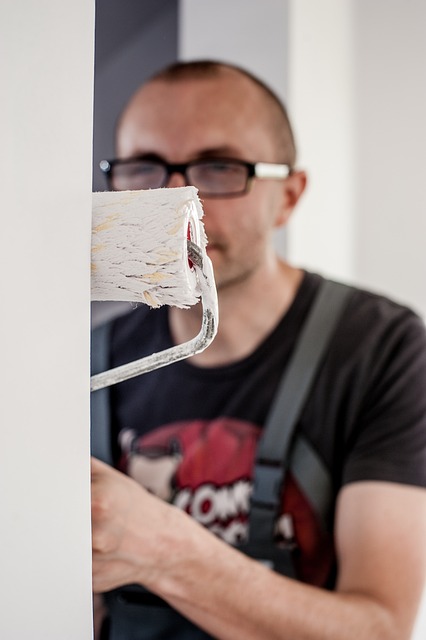“Foundation soil stabilization is a critical process ensuring structural integrity and longevity of buildings. This comprehensive guide delves into the intricacies of this technique, addressing common challenges like unstable soil causes. From understanding basic principles to exploring advanced technologies, we cover various stabilization methods employed by expert foundation repair specialists. Learn about the benefits, real-world case studies, and key considerations for selecting the right professionals. Additionally, discover maintenance tips and future trends shaping this essential sector.”
Understanding Soil Stabilization: The Basics

Soil stabilization is a critical process, often required by foundation repair specialists, to ensure the structural integrity and longevity of buildings. It involves modifying the soil around a structure to improve its bearing capacity and reduce settlement or subsidence. This technique is particularly essential in areas where soil conditions are less than ideal, such as loose sand, clay, or poorly compacted earth, which can lead to foundation failures over time.
By understanding the unique challenges posed by different soil types, foundation repair specialists can employ various stabilization methods. These include adding structural elements like piles and beams to redistribute weight, using chemical stabilizers to strengthen the soil, or implementing mechanical means like soil nailing or mesh reinforcement. The goal is to create a stable environment for the building’s foundation, preventing costly repairs and ensuring the safety of occupied structures.
Common Causes of Foundation Soil Instability

Soil instability is a common challenge faced by many homes, leading to significant structural issues over time. Understanding the root causes is essential for homeowners and foundation repair specialists alike. One of the primary reasons for foundation soil instability is poor initial soil preparation. In construction projects, inadequate compaction or improper soil mixture can lead to settling and shifting, especially when heavy structures are involved. Additionally, expansive soils, which swell and contract with moisture changes, can exert immense pressure on foundations, causing cracks and misalignments.
Another frequent cause lies in the natural characteristics of the local geology. Areas prone to high water tables or excessive rainfall often experience soil heave, where moist soil expands against foundation walls, leading to bowing or cracking. Uncontrolled vegetation growth, such as tree roots, can also contribute to instability by exerting pressure on foundations and causing settlement. Identifying these issues early on is crucial, as prompt action by foundation repair specialists can prevent more severe and costly damage down the line.
Types of Soil Stabilization Techniques

Foundation soil stabilization is a critical process that involves various techniques to enhance the structural integrity of buildings and infrastructure. The primary goal is to prevent or mitigate settling, shifting, and other geotechnical issues that can compromise the stability of foundations. Foundation repair specialists employ different methods depending on the unique challenges posed by the soil and structural requirements.
Common stabilization techniques include chemical stabilization, where specialized chemicals are injected into the soil to improve its bearing capacity. Another approach is mechanical stabilization, utilizing equipment like pile driving or geosynthetics to reinforce the soil. Additionally, dynamic compaction involves vibro-compaction technology to densify loose soils, enhancing their load-bearing properties. These methods are crucial for ensuring the longevity and safety of structures, especially in areas with unstable soil conditions, where Foundation repair specialists play a vital role in providing effective solutions.
How Foundation Repair Specialists Approach Soil Stabilization

When it comes to foundation soil stabilization, Foundation Repair Specialists employ a nuanced approach, understanding that every structure and site is unique. They begin by conducting thorough assessments to identify the specific challenges posed by the soil, including its type, moisture content, and compactness. This involves utilizing advanced testing methods such as soil analysis and geotechnical surveys to gather critical data.
Once the data is in hand, specialists design customized stabilization solutions tailored to address the identified issues. These might include implementing techniques like deep foundation enhancement, where specialized materials are injected into the soil to improve its load-bearing capacity. They may also employ ground modification methods, such as soil cementation or chemical stabilization, to enhance soil integrity and reduce settlement. The ultimate goal is to ensure the structural integrity of buildings by creating a stable and durable foundation.
Benefits of Professional Soil Stabilization Services

Soil stabilization is a crucial process, especially in areas with unstable ground, ensuring the integrity and longevity of structures. Professional soil stabilization services offer numerous advantages when it comes to foundation repair and stability. Foundation repair specialists employ advanced techniques to strengthen and consolidate loose or compacted soils, addressing underlying issues that may compromise building foundations.
By utilizing specialized equipment and expertise, these professionals can enhance soil bearing capacity, reduce settlement, and prevent future damage. This is particularly beneficial for older structures or those constructed on soft terrains. Professional stabilization services provide a cost-effective solution, ensuring the safety and stability of homes and commercial buildings, thus eliminating the need for frequent repairs and costly renovations.
Case Studies: Successful Soil Stabilization Projects

Successful soil stabilization projects offer valuable insights into effective foundation repair strategies. Case studies from around the globe highlight the transformative power of specialized techniques in mitigating soil-related challenges. For instance, a coastal city faced severe erosion issues due to high tide and stormy weather. Foundation repair specialists implemented a comprehensive solution involving soil stabilization with geogrids and bio-engineering techniques. This project not only halted erosion but also enhanced the structural integrity of buildings in the area, demonstrating the importance of tailored interventions.
Another notable case involves an urban redevelopment project in a dense metropolis. Old industrial sites often leave behind contaminated and unstable soils. Here, foundation repair experts employed advanced stabilization methods like chemical soil stabilization and deep mixing. The result was a levelled playing field for future construction, showcasing how these projects can revitalize areas once deemed problematic. These real-world examples underscore the critical role played by foundation repair specialists in ensuring the longevity and safety of structures built on challenging soil conditions.
Choosing the Right Foundation Repair Specialist for Soil Stabilization

Selecting a reputable Foundation Repair Specialist is paramount for successful soil stabilization. Look for professionals with extensive experience in assessing and addressing soil-related issues, such as settlement cracks, uneven floors, or sinking foundations. Their expertise ensures they can identify the root cause of foundation problems and implement tailored solutions that meet your specific needs.
Reputation and credentials are key indicators when choosing a specialist. Check online reviews, inquire about licenses and insurance, and request references. Experienced Foundation Repair Specialists should stay updated with the latest industry standards and technologies, offering innovative and effective methods for soil stabilization.
Maintenance and Prevention Tips for Soil-Stabilized Foundations

Regular maintenance is key to ensuring your soil-stabilized foundation remains robust and secure over time. One of the primary preventive measures is to keep the area around the foundation free from debris, especially after heavy storms or seasonal changes. Remove any tree roots or loose materials that could potentially disrupt the stability of the soil. Additionally, monitoring groundwater levels is essential; excessive moisture can erode the soil, so ensuring proper drainage is critical.
Foundation repair specialists recommend periodic inspections to identify any signs of shifting or damage early on. Addressing issues promptly prevents minor problems from escalating. Regularly check for cracks in the foundation walls and floors, as these could indicate soil movement. It’s also advisable to seal any gaps around pipes and utility lines, preventing water penetration that might contribute to soil erosion and further foundation instability.
Future Trends in Soil Stabilization Technology

The future of foundation soil stabilization is poised for significant advancements, driven by technological innovations and a growing demand for efficient, long-lasting solutions from Foundation Repair Specialists. One prominent trend is the integration of advanced materials, such as polymeric additives and synthetic fibers, which enhance soil strength and elasticity. These cutting-edge products offer a more sustainable and environmentally friendly alternative to traditional methods, while also providing enhanced structural support for buildings and infrastructure.
Additionally, digital technologies like geotechnical sensors and predictive modeling are set to play a pivotal role in soil stabilization. Real-time monitoring of soil conditions allows Foundation Repair Specialists to make data-driven decisions, optimising stabilization techniques and ensuring the longevity of repairs. This blend of innovative materials and sophisticated analytics promises to transform the industry, making foundation stabilization more precise, efficient, and cost-effective for years to come.
